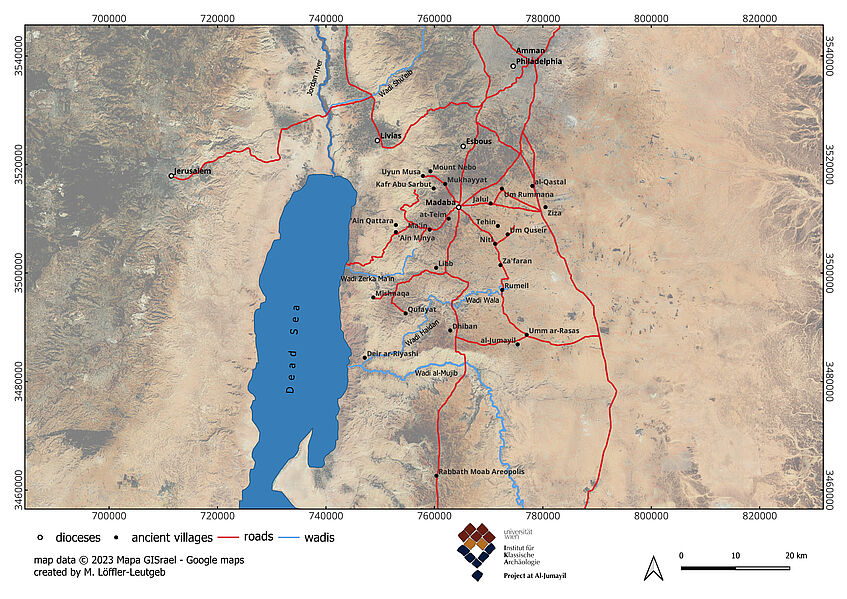Rethinking Periphery in Late Antique Arabia
The project "Rethinking Periphery in Late Antique Arabia" aims to collect evidence of anthropogenic landscape management, agricultural exploitation, economic exchange, and medium-scale industrial production, to gain a holistic view on ancient rural villages and to understand their role within greater regional contexts and networks.

FWF-Project
- Project director: Univ. Prof. Dr. Basema Hamarneh
- Project number: FWF-P 35326
- Duration: 01.10.2022 – 30.09.2026
Informations
The socio-economic conditions of the Byzantine East were greatly dependent on the development of the rural landscape. The considerable number of village-based communities in the Eastern Mediterranean area attests to the vital importance of agriculture in daily life and to the fact that a vast majority of the population was engaged in farming; this agrarian character has persisted into the modern era. Paradoxically the study of the countryside in this region has focused mainly on large settlements: peripheral towns and their prominent landscape features have been overlooked, despite their significant role within a wider context of market and trade networks.
The present project aims to investigate such neglected cases and consider their importance in the social and economic fabric of Late Antique Near East (4th – 8/9th century AD). The aim is to collect evidence of anthropogenic landscape management, agricultural exploitation, economic exchange, and medium-scale industrial production. Given the strong regional character that affects several aspects of settlement development, the project will focus on one specific context, the rural area of the Diocese of Madaba in Jordan considered as a coherent system in space and time. This is given by its long and nearly uninterrupted history of occupation (Iron Age – Hellenistic – Late Roman – Byzantine – Islamic), its specific material culture (pottery, sculpture, mosaics etc.), and the availability of comparable archaeological documentation (excavations and surveys). Occupation phases associated with material culture remains from the Iron Age, Hellenistic and Roman periods have been detected according to a pattern strictly governed by economic and political changes in several other sites in the Diocese of Madaba. However, the most outstanding development can be ascribed to Late Antiquity and the Early Islamic periods (5th – 8th /9th centuries). From a historical perspective, the concept put forward by Foucault of heterotopias of time, which asserts that one space encloses a microcosm of different layers and functions, can well be applied to the case of small, only apparently marginal, rural settlements (Foucault 1998, 175–185). The village of al-Jumaiyil, which, our specific focus and case study in this project, is no exception; its multi-layered occupational phases, overlapping in one space, constitute a promising field for interdisciplinary research, which is expected to produce results that could not be achieved with traditional archaeological techniques alone. A multidisciplinary approach is required to attain a full understanding of the site over its long occupation period.


Rethinking Periphery in Late Antique Arabia is an FWF funded project that runs from 2022 to 2026 and is located at the University of Vienna at the Department of Classical Archaeology.


